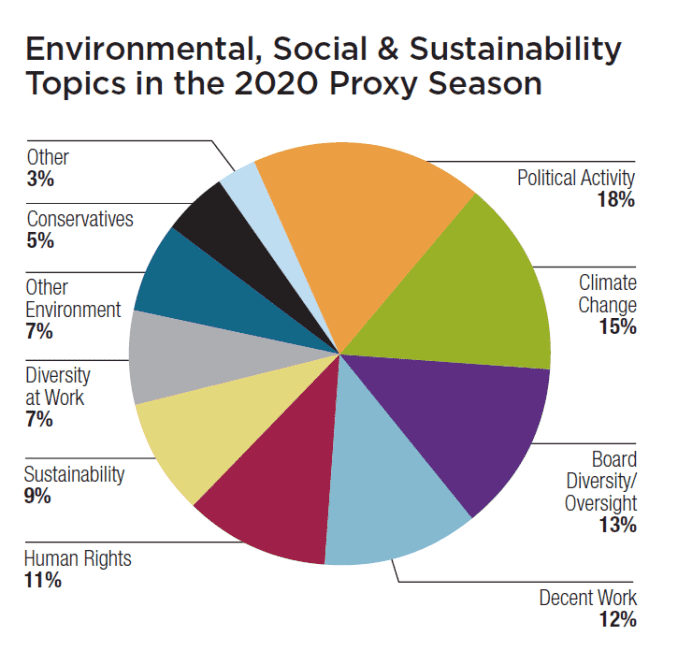CNBC, PUBLISHED MON, NOV 30 20209:00 AM EST, Deborah Nason,
- Financial advisors, active asset owners and investment managers deploy shareholder advocacy to make corporations notice and respond to shareholder concerns.
- The three main ways this type of activism raises the voice of the shareholder are company engagement, shareholder resolutions and proxy voting.
With sustainable investing, you cannot only use your money to make the world a better place, you can also use your money’s voice.
Such is the job of shareholder advocacy, a primary strategy under the umbrella of sustainable/socially responsible investing. A small, but dedicated number of financial advisors, along with other active asset owners and investment managers, are deploying this type of activism on behalf of their clients to make large corporations take notice of, and respond to, shareholder concerns.
1. Company engagement
Company engagement, also called dialogue, refers to a conversation with a company on environmental, social and governance issues of concern to the shareholder. The vast majority of companies will talk to their shareholders, said advocacy pioneer Tim Smith, director of ESG shareowner engagement for investment manager Boston Trust Walden in Boston.
Smith and his firm engage with about 100 companies per year, often collaborating with large investor coalitions, groups of institutional investors that come together to advocate on particular issues. “It’s very influential when one of these groups writes letters to companies,” he said.
2. Shareholder resolutions
Currently, any shareholder owning more than $2,000 in company shares can file a resolution (also called a proposal) for a vote at the stockholders’ annual meeting. This is a 500-word proposal included in the proxy statement circulated to all the shareholders. Smith described several common outcomes, including:
- A negotiated agreement between the company and the resolution proponents [filers], leading to a withdrawal of the proposal.
- The company challenges the validity of the resolution via the SEC.
- The resolution is published in the proxy for a vote at the annual meeting.
Hundreds of resolutions are introduced every year. During the 2020 proxy season, 462 proposals were filed. Of those, 44% were withdrawn, generally after companies and proponents reached agreements, according to Heidi Welsh. She is executive director of the Sustainable Investments Institute, and co-author of Proxy Preview, an annual forecast and resource on shareholder resolutions. (See graphic below.)

3. Proxy voting
When individual shareholders vote on resolutions on an annual meeting proxy page, their influence is amplified by the number of shares they own, as each share equals one vote. Accordingly, when large institutional money managers, pension funds, and mutual funds vote the millions of shares they hold, companies really start take notice, Smith explained, adding that sometimes proponents reach out to major shareholders to encourage them to vote for the resolution.
A resolution doesn’t need to have an overwhelming shareholder approval rate to have an impact, said Holly Testa, director of shareowner engagement at First Affirmative Financial Network.
“Even a 20% approval rate will get their attention,” she said. “But the big wins come through dialogue, whether connected to a resolution or not.
“You start to develop a relationship with the companies, and it becomes more like teamwork,” she added. “We’ve made tremendous progress with companies that are willing to work with us.”
An example of such progress is the success achieved by Newground Social Investment in its engagement with McDonald’s. Newground filed a shareholder resolution that included scientific research and a compelling narrative proposing pesticide reduction strategies for the corporation’s potato growers worldwide.
“First, they challenged it and tried to have the SEC throw it out, but we convinced them that dialogue was a better option and they withdrew the challenge,” said Bruce Herbert, founder and CEO of the Seattle-based financial advisory firm.
As a result of the dialogue, McDonald’s agreed to conduct a pilot project on 10% of their potatoes. It was so successful that in one year, the strategies went from zero to 100% usage, and were extended to all its agricultural crops, reducing pesticide exposure throughout its global operations.
Further outcomes included cost savings and improvements in farmers’ health and local environments, Herbert said.







